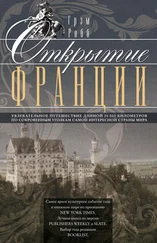2. Graziadei P.P., Monti Graziadei G.A. Neurogenesis and Plasticity of the Olfactory Sensory Neurons // Ann NY Acad. Sci., 1985. № 457. Р. 127–142.
3. Лоренц К. Кольцо царя Соломона. М.: Знание, 1970; 4-е изд. М.: Римис, 2011.
1. Молекулы в воздухе: запахи в нашей повседневной жизни
1. Зюскинд П. Парфюмер. История одного убийцы: Роман / Пер. с нем. Э.В. Венгеровой // Иностранная литература. 1991. № 8.
2. Amoore. Molecular Basis of Odor; Amoore, Johnston, Rubin. The Sterochemical Theory of Odor; Amoore. Specific Anosmia: A Clue to the Olfactory Code.
3. Amoore J.E. Specific Anosmia and the Concept of Primary Odors // Chem Senses, 1977. № 2. Р. 267–281.
2. Запахи и молекулы: химический анализ у нас в носу
1. Sell C.S. On the Unpredictability of Odors // Angewandte Chemie, 2006. № 45. Р. 6254–6561.
2. Ohloff G., Pickenhagen W., Kraft Ph. Scent and Chemistry. Wiley, 2011; Pybus D.H., Sell C.S. The Chemistry of Fragrances. Royal Society of Chemistry. London, 2004; Sell C.S. Understanding Fragrance Chemistry. Allured Publishing Corporation, 2008.
4. Ольфакторный код и химический язык
1. Arctander S. Perfume and Flavor Chemicals (Aroma Chemicals). Allured Publishing Corporation, 2000.
2. Hubel D.H. Eye, Brain, and Vision. Scientific American Library, 1988; Nathans J., Thomas D., Hogness D.S. Molecular Genetics of Human Color Vision: The Genes Encoding Blue, Green, and Red Pigments // Science, 1986. № 232. Р. 193–202.
3. Amoore, Johnston, Rubin. The Sterochemical Theory of Odor; Amoore. Specific Anosmia: A Clue to the Olfactory Code.
5. Насекомые и феромоны: смертельное влечение
1. Kaissling, K.-E. Chemo-Electrical Transduction in Insect Olfactory Receptors. Annual Review of Neurosciences, 1986. № 9. Р. 21–45; Kaissling K.-E., Wright R.H. Lectures on Insect Olfaction. Ed.K. Colbow, Simon Fraser University, 1987.
2. Butenandt A., Beckamnn R., Hecker E. Über den Sexuallockstoff des Seidenspinners. 1. Der biologische Test und die Isolierung des reinen Sexuallockstoffes Bombykol // Hoppe-Seylers Zeitschrift für Physiologische Chemie, 1961. № 324. Р. 71.
3. Wyatt T.D. Pheromones and Animal Behavior: Chemical Signals and Signatures. 2nd edn. Cambridge University Press, 2014.
4. The Pherobase: база данных по феромонам насекомых и химическим сигнальным веществам. Доступна по адресу: http//www.pherobase.net/.
5. Free J.B. Pheromones of Social Bees. Cornell University Press, 1987.
6. Hölldobler B, Wilson E.O. The Superorganism: The Beauty, Elegance, and Strangeness of Insect Societies. W.W. Norton & Company, 2008; Hölldobler B, Wilson E.O. Journey to the Ants: A Story of Scientific Exploration. Belknap Press, 1998.
7. Slessor K.N., Kaminski L.-A., King G.G. S., Borden J.H., Winston M.L. Semiochemical Basis of the Retinue Response to Queen Honey Bees // Nature, 1988. № 332. Р. 354–356.
8. von Frisch, K. The Dance Language and Orientation of Bees. The Belknap Press of Harvard University Press, 1967.
9. Farina W.M., Grüter C., Díaz P.C. Social Learning of Floral Odours Inside the Honeybee Hive // Proc Biol Sci., 2005. № 272. Р. 1923–1928.
10. См. сайт Американской ассоциации по контролю за комарами: http://www.mosquito.org.
11. Pohlit A.M., Lopes N.P., Gama R.A., Tadei W.P., Neto V.F. Patent Literature on Mosquito Repellent Inventions which Contain Plant Essential Oils – A Review // Planta Med., 2011. № 77. Р. 598–617. doi: 10.1055/s-0030–1270723.
6. Млекопитающие и феромоны: запахи ранга и родства
1. Свежее исследование о феромонах у млекопитающих и насекомых можно найти в книге: Mucignat-Caretta C. (ed.) Neurobiology of Chemical Communication. CRC Press, 2014.
2. Doty R.L. The Great Pheromone Myth. Johns Hopkins University Press, 2010.
3. Hurst J.L., Beynon R.J. Scent Wars: The Chemobiology of Competitive Signalling in Mice // Bioessays, 2004. № 26. Р. 1288–1298.
4. Schaal B., Coureaud G., Langlois D., Giniès C., Sémon E., Perrier G. Chemical and Behavioural haracterization of the Rabbit Mammary Pheromone // Nature, 2003. № 424. Р. 68–72.
5. Schaal B. Pheromones for Newborns // Mucignat-Caretta C. (ed.) Neurobiology of Chemical Communication. CRC Press, 2014. Chapter 17.
7. Биохимия обоняния: одоранты и белки
1. Buck L., Axel R. A Novel Multigene Family May Encode Odorant Receptors: A Molecular Basis for Odor Recognition // Cell, 1991. № 65. Р. 175–187.
2. Для тех, кто интересуется рецепторами и нейротрансмиттерами, есть множество книг – от научно-популярной литературы до специализированных технических руководств. Обратите внимание на следующие издания: Snyder S.H. Drugs and the Brain. W H Freeman & Co, 1996; Snyder S.H. Science and Psychiatry: Ground-breaking Discoveries in Molecular Neuroscience. American Psychiatric Publishing, 2008; Hulme E.C. Receptor Biochemistry: A Practical Approach. IRL Press, 1990.
3. Об ольфакторных порогах см.: van Gemert L.J. Flavour Thresholds. Compilations of Flavour Threshold Values in Water and Other Media. 2 ndenlarged and revised edn. Oliemans Punter and Partners BV, 2001.
4. Amoore, Pelosi, Forrester . Specific Anosmia to 5a-androst-16-en-3-one and ω-pentadecalactone: The Urinous and Musky Primary Odors // Chem. Sens., 1977. № 2. Р. 401.
5. Keller A., Zhuang H., Chi Q., Vosshall L.B., Matsunami H. Genetic Variation in a Human Odorant Receptor Alters Odour Perception // Nature, 2007. № 449. Р. 468–473.
6. Pelosi P., Baldaccini N.E., Pisanelli A.M. Identification of a Specific Olfactory Receptor for 2-isobutyl-3-methoxypyrazine // Biochem. J., 1982. № 201. Р. 245–248.
7. Welton T. Room-Temperature Ionic Liquids // Chem. Rev., 1999. № 99. Р. 2071–2084. doi:10.1021/cr980032t; Freemantle M., Welton T., Rogers R.D. An Introduction to Ionic Liquids. Royal Society of Chemistry, 2009.
8. Одоранто-связывающие белки: семейство версатильных молекул
1. Bignetti E., Cavaggioni A., Pelosi P., Persaud K.C., Sorbi R.T., Tirindelli R. Purification and Characterization of an Odorant Binding Protein from Cow Nasal Tissue // Eur. J. Biochem., 1985. № 149. Р. 227–231.
2. Pevsner J., Trifiletti R.R., Strittmatter S.M., Snyder S.H. Isolation and Characterization of an Olfactory Receptor Protein for Odorant Pyrazines. Proc. Natl. Acad. Sci. USA., 1985. № 82. Р. 3050–3054.
3. Vogt R.G., Riddiford L.M. Pheromone Binding and Inactivation by Moth Antennae // Nature,1981. № 293. Р. 161–163.
4. Bianchet M.A., Bains G., Pelosi P., Pevsner J., Snyder S.H., et al. The Three Dimensional Structure of Bovine Odorant-Binding Protein and Its Mechanism of Odor Recognition // Nat. Struct. Biol., 1996. № 3. Р. 934–939; Tegoni M., Ramoni R., Bignetti E., Spinelli S., Cambillau C. Domain Swapping Creates a Third Putative Combining Site in Bovine Odorant Binding Protein Dimer // Nat. Struct. Biol., 1996. № 3. Р. 863–867.
Читать дальше
Конец ознакомительного отрывка
Купить книгу
![Паоло Пелоси Обоняние [Увлекательное погружение в науку о запахах] обложка книги](/books/390311/paolo-pelosi-obonyanie-uvlekatelnoe-pogruzhenie-v-cover.webp)










